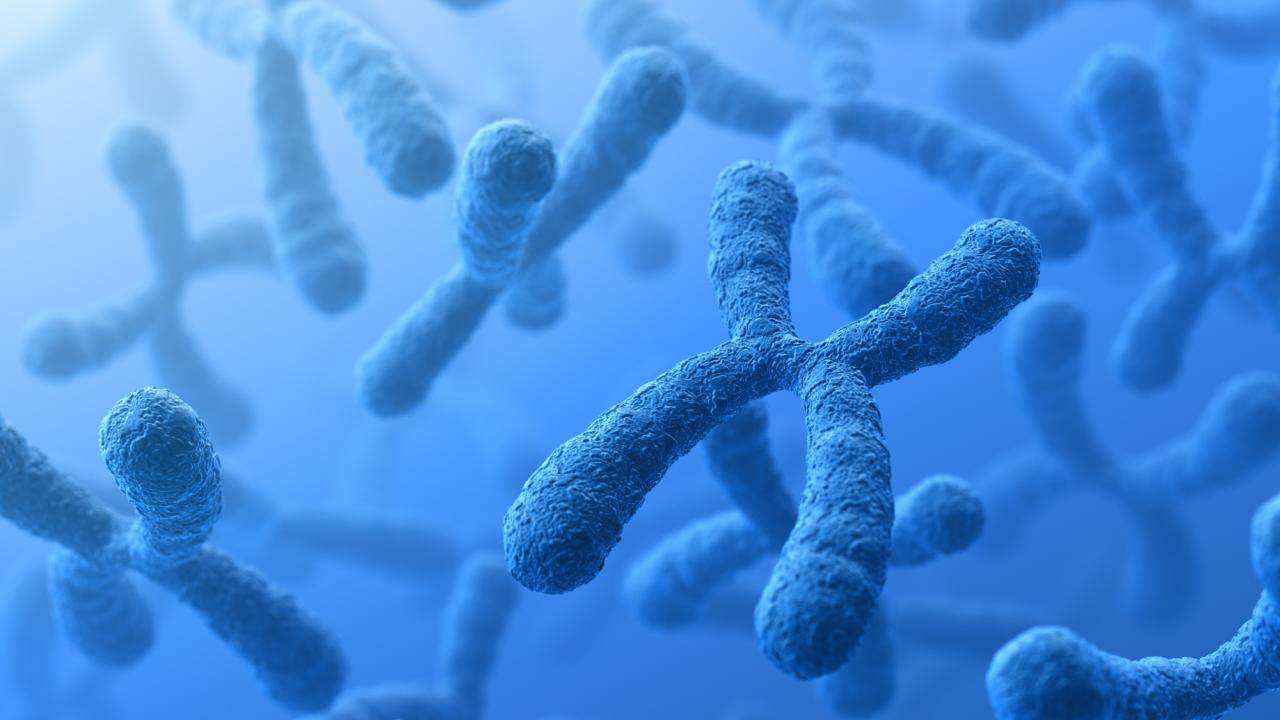Female infants are born with several million immature egg cells, or oocytes. Over the course of the reproductive years, a few hundred of them will develop into mature eggs for potential fertilization. Because of this extended maturation process, the oocytes of humans and other mammals are vulnerable to both developmental exposures and the aging process. A study of female mice recently published in Environmental Health Perspectives suggests that the herbicide atrazine can mimic and worsen the effect of maternal aging on egg quality.
Specifically, the authors observed a higher frequency of a chromosome error called aneuploidy in the eggs of mice that received atrazine in drinking water, compared with eggs of unexposed animals. Aneuploid eggs contain too few or too many chromosomes and—if they develop beyond fertilization—produce nonviable embryos or offspring with congenital defects. Aneuploidy increases greatly with maternal age, affecting more than 40% of eggs in women more than 40 years old.
Atrazine, an endocrine-disrupting chemical that degrades slowly in the environment, was banned in the European Union in 2004 but continues to be used in the United States and elsewhere on agricultural fields, golf courses, and other recreational areas. The chemical can migrate through soil to reach groundwater, and field runoff can contaminate surface waters.
The authors of the new study aimed to assess the effects on oocyte quality of atrazine exposure via drinking water at different life stages. The team studied developmental exposure by giving pregnant mice water that contained either a low or high dose of atrazine from embryonic day 0.5 until weaning (21 days postpartum), exposing the pups in utero and through nursing. Exposure during early adulthood was studied using female mice that consumed atrazine-containing water from 2 to 5 months of age.
As a low dose, the authors used the World Health Organization guideline of 100 micrograms per liter, which is lower than levels used in several previous animal studies of atrazine but higher than the U.S. drinking water limit of 3 micrograms per liter. The high dose was the maximum possible water concentration of 33 milligrams per liter. Typical atrazine levels in the environment are below 2 micrograms per liter.
Chromosome cohesion
The researchers analyzed oocytes of exposed and unexposed mice at various stages of meiosis, the cell division process that produces egg and sperm cells containing half the number of chromosomes as other cells (thus ensuring a full set in offspring). In females, each chromosome replicates into two identical sister chromatids held together by ring-like protein complexes called cohesins.
“Cohesins are an Achilles heel for eggs,” said Neil Hunter, a professor of microbiology and molecular genetics at the University of California, Davis, an investigator with the Howard Hughes Medical Institute, and the paper’s senior author. “Their chromosome cohesion function is established during fetal development but must be maintained until the chromosomes are separated months later in mice, or decades later in humans.”
The authors found that the chromosomes of oocytes from exposed mice contained lower cohesin levels.
“This suggests that atrazine exacerbates the effects of maternal aging on oocyte quality by weakening sister-chromatid cohesion,” said first author Yan Yun, a postdoctoral researcher in the Department of Microbiology and Molecular Genetics at UC Davis. Compared with controls, eggs from both low- and high-exposure groups consistently showed a higher frequency of chromosome errors. Importantly, the effects were of similar magnitude for developmental and adult exposure groups and were observed long after the exposure period had ended.
The researchers found chromosome errors in more than 40% of eggs from 15-month-old mice that were exposed developmentally, compared with only 7% of eggs in unexposed mice of the same age.
For Mark Green, an associate professor of reproductive biology at the University of Melbourne, Australia, the study adds to research on atrazine’s association with reproductive health outcomes such as organ and embryonic abnormalities by demonstrating that atrazine can perturb chromosome separation in oocytes.
“This provides a deeper understanding of atrazine’s effect on female reproduction, although I think the key players go beyond cohesin,” said Green, who was not involved in the study.
For example, atrazine, which was designed to interfere with plant photosynthesis, has metabolic effects in mammalian cells. Such effects can also contribute to the age-related decline of oocyte quality. Future studies focusing on mitochondria would be especially worthwhile, because they play a central role in mammalian energy metabolism and promote the correct separation of chromosomes in all cell divisions, added Green.
Karen Schindler, an associate professor of genetics at Rutgers University who also was not involved in the study, finds the similarity of aging- and exposure-induced chromosomal abnormalities striking.
“Studies like this may identify new pathways that could help us address human fertility problems,” she said.
Media Resources
Silke Schmidt, Ph.D., writes about science, health, and the environment from Madison, Wisconsin. Originally published in Environmental Health Perspectives.
Oocyte Development and Quality in Young and Old Mice following Exposure to Atrazine (Environmental Health Perspectives)
